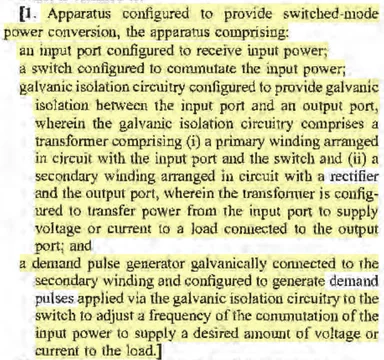
My co-blogger Nate wrote yesterday about Magistrate Judge Hall's discussion of prior art estoppel in Innovative Memory Systems Inc. v. Micron Technology Inc., No. 14-1480-RGA (D. Del. Sept. 29, 2022). That was actually just one issue the Court dealt with in a lengthy R&R and Order on a summary judgment and Daubert. I wanted to post about one of the other issues Judge Hall addressed in that opinion: patent marking.
Marking is an important and sometimes underrated issue. It's not uncommon, in patent cases, for the bulk of the damages to have accrued in the years prior to the plaintiff filing suit. These "pre-suit" damages can be at risk, though, if the patentee sold products that practice the patent and failed to mark them under 35 U.S.C. § 287(a). Here is how Judge Hall explained it in Innovative Memory:
[W]hen a plaintiff makes or sells a product practicing its patent, the plaintiff can only recover pre-suit damages from an infringer if (1) the patentee marked its product in the manner specified in § 287(a) or (2) the patentee notified the infringer of its infringement. Even if a plaintiff patentee doesn’t make or sell anything, it cannot recover pre-suit damages (absent providing notice) if a prior owner of the patent failed to mark its products covered by the patent.
One interesting thing about marking, which parties sometimes seem to forget, is that once the accused infringer identifies the products it believed required marking, it is the patentee's burden to show that it didn't fail to mark:
Because the marking requirement of § 287 is a condition of damages, not an affirmative defense, the patentee bears the burden of proving compliance, either by showing that the relevant products were marked or by showing that they did not practice the patent. Arctic Cat Inc. v. Bombardier Rec. Prods. Inc., 876 F.3d 1350, 1367 (Fed. Cir. 2017). However, to give reasonable boundaries to the patentee’s burden of proof, the Federal Circuit has imposed a limited initial burden on accused infringers: they must identify the articles sold that allegedly embody the patents. Id. at 1368. The accused infringer’s burden is not a burden of proof or persuasion; it is merely a procedural burden to provide notice of the identity of products that it believes required marking. Id. (“To be clear, this is a low bar.”).
I've seen people's eyes glaze over on the subject of "burdens of proof," but this is an important one!
All the accused infringer has to do to raise a failure to mark is find a product that practices the claims that wasn't marked—ideally one that is similar to the accused products. If they can do that, the patentee is in a bind: they have to prove that product didn't practice the claims, while simultaneously proving the accused product did (and avoiding stepping on the prior art).
It's an asymmetric standard that really favors the accused infringer, at least in competitor cases. (Of course, in practice, there is usually an allegation that the products were marked, perhaps by a random un-findable page on the patentee's website that lists all of its products all of its patents. But that's an issue for another post.)
The Court's opinion here shows the hazards of a patentee not respecting the burdens of proof on marking. The Court granted summary judgment of no pre-suit damages because, rather than trying to affirmatively meet their burden, the patentee merely tried to poke holes in the accused infringer's analysis of why the produced practiced the claims. That wasn't enough:
IMS [the patentee] contends that there is a genuine dispute over whether either of the identified SanDisk products actually practiced the ʼ498 patent. Because IMS has the burden of proof on this issue, in order to avoid summary judgment it must point to evidence in the record from which a jury might find that the SanDisk products do not embody the ʼ498 patent. . . .
IMS has failed to do so. Instead, it essentially seeks to shift the burden of proof to Micron. IMS points out that (1) Micron’s expert referred to SanDisk user manuals that described the products at only a high level and do not establish that they meet the elements of the claims, and (2) IMS’s expert said that “there is no evidence that any of the SanDisk products [Micron’s expert listed] engages in [certain limitations required by the ʼ498 patent claims].” . . . Neither of those things are evidence that the SanDisk products are not covered by the ʼ498 patent. IMS offered no evidence that the SanDisk products do not embody the ʼ498 patent. And without any evidence, there can be no genuine dispute of fact. . . . Accordingly, I recommend that the Court grant partial summary judgment that IMS cannot recover pre-suit damages for infringement of the ʼ498 patent.
Judge Hall rejected the patentee's claim that their expert had opined that the produce do not patent the claim, pointing out that the expert had really just said that there was no evidence in the product's datasheets that the products practice certain elements:
IMS’s brief asserts that its expert “confirm[ed] . . . that none of the [SanDisk] products” meet certain claim limitations required by the ʼ498 patent. (D.I. 308 at 23; see also Tr. 186:5-8.) IMS’s expert did not “confirm” that. He merely opined that “there is no evidence” in the product data sheets that the SanDisk products meet those limitations. (D.I. 310 ¶ 100.)
Interestingly, the briefing also notes that the expert testified at deposition that he did not know whether the products embody the asserted claims (D.I. 337 at 11)—but the Court did not rely on or even mention that testimony.
All told, it looks like the patentee here just flubbed the burden, not realizing that it had to show that it's products were either marked or didn't practice the claims if it wanted to receive damages for pre-suit infringement. Don't fall into this trap!
If you enjoyed this post, consider subscribing to receive free e-mail updates about new posts.




